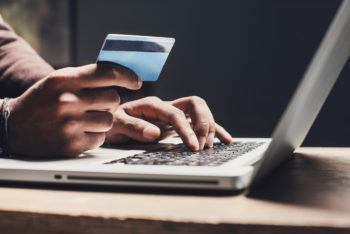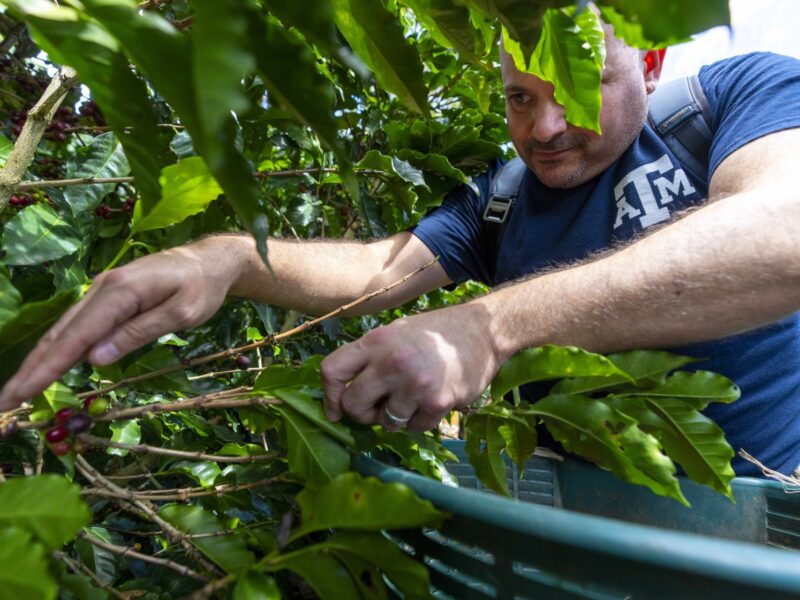Make Your Holiday Shopping Safer

While initial sales reports indicate the COVID-19 pandemic has not put a damper on holiday shopping sales generally, it has made a great difference in how consumers choose to shop.
“Through Black Friday and the Thanksgiving weekend, we have seen a significant reduction in the number of people going into malls and retail stores to shop,” said Joyce Cavanagh, Texas A&M AgriLife Extension Service family and community health specialist, Bryan-College Station. “With social distancing being the most important aspect of reducing the spread of COVID-19, many shoppers are avoiding these types of congregate settings to decrease their risk of getting the coronavirus.”
However, she said, there are options and additional measures shoppers can use to protect themselves from the coronavirus.
Online Shopping A Popular — And Safer — Option
“Online shopping has been popular due to its flexibility and convenience, and now it has the additional advantage of being the safest method of holiday shopping,” Cavanagh said. “You can buy items and have them delivered to your location or directly to the person you want to have receive them. The great success of Cyber Monday has further shown the growing consumer preference for online shopping, particularly during the pandemic. Online shopping is especially helpful for those individuals who are at higher risk for contracting COVID.”
She cautioned, however, that packages being delivered to your doorstep have been handled by others, so it’s best not to assume they are completely free of pathogens.
“Even though there is little risk of the coronavirus being transmitted through packaging, you should still try to avoid contact with the delivery person,” she said. “And if you are at high-risk or particularly concerned about COVID, you may want to wear gloves when opening packages. If you opt not to wear gloves, once you have opened your package you should dispose of the outer packaging and wash your hands thoroughly if you want an extra measure of safety.”
Cavanagh also noted that consumers should only purchase online from trusted vendors and beware of unsolicited offers.
“Identity theft also increases around the holidays, so consumers should be extra cautious about where they share their credit card number or other personal information,” she said. “And porch pirates are also out in force this time of year, going into neighborhoods and looking to steal packages that have been recently delivered, so you need to protect against them as well.”
Cavanagh said some ways to help thwart porch pirates include:
- Opting for in-store or curbside pickup instead of home delivery.
- If you expect you won’t be home when a package arrives, coordinate with a trusted friend, neighbor or relative to have it shipped to their address.
- Work with your neighbors to keep an eye out for one another’s deliveries.
- Have packages delivered to your work address or another location that will provide greater security.
- Track deliveries online and plan to be home when they arrive to minimize the amount of time they are left outside.
- If possible, request the package be left out of sight by a rear or side door.
“There are other means of thwarting porch pirates such as renting a post office box, installing a motion-activated light to deter night pirates or installing a security camera or doorbell with a built-in camera,” she said. “However, there are also some low-cost and practical ways you can help keep porch pirates from pilfering your holiday treasures.”
Plan And Organize In-Person Shopping
Cavanagh said another way to increase consumer safety is to shop ahead in order to avoid a last-minute holiday rush that may require going into a crowded area.
“It’s human nature to procrastinate, and the holidays are a particularly busy time, so it’s possible some gift items might be forgotten,” Cavanagh said. “As a result, more people will be out shopping the closer it gets to Christmas. To keep from putting yourself in a position where you need to be among the late shoppers, do your shopping as soon as possible. Make a list of all the people you need to buy gifts for — and the choices of possible gifts for them. Approach your shopping in an organized way.”
She noted the more focused and organized a person is, the less time they will need to spend at the shopping location.
“The CDC recommends people should avoid shopping if they feel ill or have a fever, cough or other possible symptom related to COVID-19,” she said. “It’s best in general to limit in-person visits to stores. Consumers should check to see if a retailer has a delivery or curbside service. This will help keep them out of the store as well as keep the amount of personal contact to a minimum.”
Cavanagh said shopping at off times such as shortly after stores open, or on weekdays instead of weekends, will also reduce the possibility of being caught in a crowd.
“Some stores offer special shopping times for designated customers, so if you fall into one of these groups you also have the option of shopping during those hours,” Cavanagh said.
Don’t Be Too ‘Touchy’
“Another consideration is that many people are ‘tactile’ shoppers and like to feel or even shake the items they may want to purchase,” Cavanagh said. “And while the risk of getting COVID transfer off a contaminated surface is small, you may want to wear latex gloves while shopping to further lower the possibility of any pathogen transfer.”
She said shoppers should always follow Centers for Disease Control and Prevention guidelines, including wearing a mask, practicing social distancing recommendations and avoiding touching their eyes, nose or mouth.
“Some stores already limit the number of people allowed, and that has helped,” Cavanagh said. “Unfortunately, many people still ignore social distancing while they are shopping and at the checkout line. And even though most stores now provide hand sterilizer, it’s a good idea to carry your own and use it regularly, including immediately after you’ve left the store. Or if practical, wash your hands in the restroom before you leave the store.”
Another means of protection is the way you pay, she said.
“Again, while contact with a contaminated surface does not create a particularly high risk for COVID-19 infection, when you’re shopping in person it’s best to pay in the way that has the least amount of contact.”
Cavanagh said paying with cash creates the biggest risk of transfer, as bills and coins typically pass through numerous hands.
“Paying by regular credit card is better, but it’s still not the most contact-free way to pay and has a measure of risk,” she explained. “You still have to either hand the card to the cashier or insert the card and push the necessary buttons on the payment terminal to complete the transaction.”
Cavanagh said shoppers should not rely on the plastic covering over the buttons on the payment terminal to provide sufficient protection from transfer.
“These covers will still be touched my multiple people, so you may want to wear gloves or use a pencil to enter your payment selection information and PIN,” she said. “You may also want to clean the buttons with a disinfecting wipe. If you don’t have one, then consider applying hand sanitizer or going into the store restroom to wash your hands after you’ve made your purchase.”
Cavanagh said the contactless credit card probably provides the greatest amount of safety from possible contact with contamination.
“This type of credit card can be placed over or tapped on the payment terminal, helping you avoid direct contact with the cashier or pushing any buttons on the payment terminal,” she said.
This article by Paul Schattenberg originally appeared on AgriLife Today.





